Choosing spotlights on a tripod
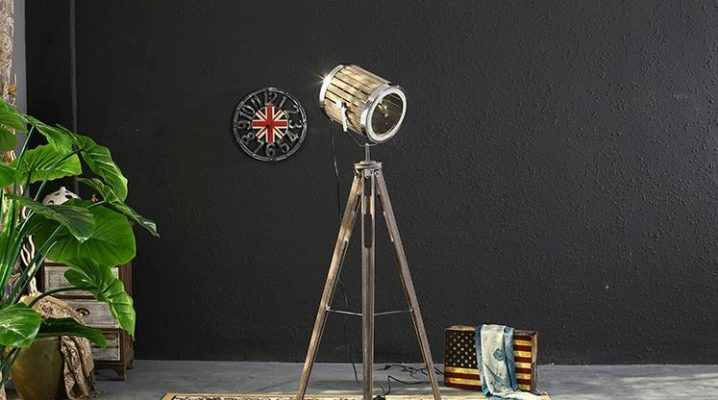
If you need to illuminate a local area, while without installing lighting equipment, then a spotlight on a tripod will help out. The device is characterized by high mobility, low weight and a wide range of applications.
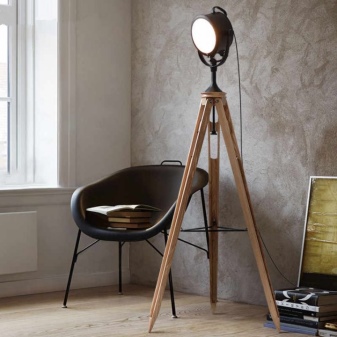
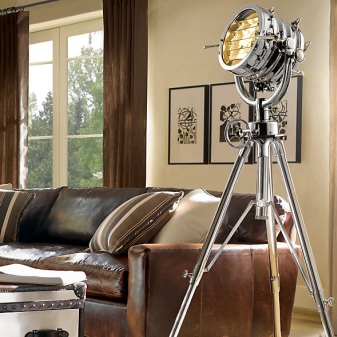
Peculiarities
A tripod-mounted spotlight is designed to provide temporary illumination. Most often used in workshops and studios, on construction sites to illuminate individual areas.
Advantages:
-
instant ignition - no need to wait for the lamps to light up, therefore they are often used as emergency lighting;
-
instantly resume work in case of power outages;
-
do not need additional maintenance after connection;
-
use energy efficiently;
-
mobility - easy to carry, use only when necessary;
-
average service life of 30-100 thousand hours, depending on the type of lamps used;
-
safe materials are used for production.
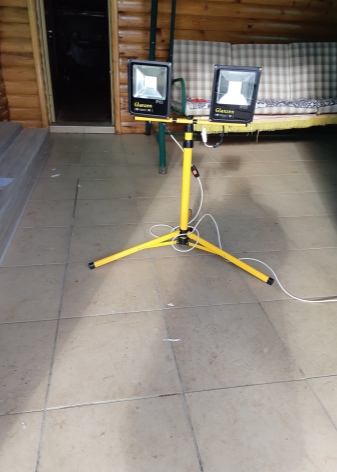
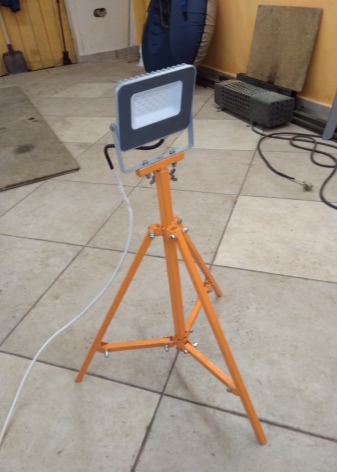
Tripod-mounted floodlights usually do not overload the power grid. This allows you to use several devices at the same time.
The spotlight looks like a tripod on a tripod, with mounts for lighting fixtures. Usually two spotlights are placed. The tripod itself is made of aluminum, which is resistant to corrosion and deformation. Additional protective coating is possible. And also some manufacturers produce models with telescopic rods, which allows you to adjust the height of the tripod.
Tripod and lamps can be purchased separately if required. The latter are easy to change depending on the lighting needs. All this makes the spotlight more versatile.
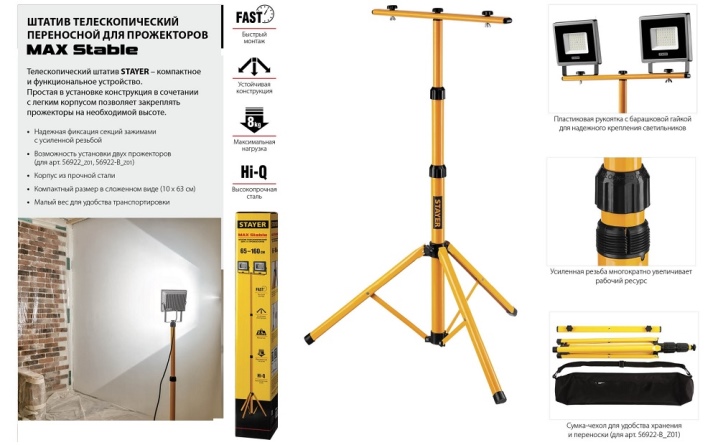
What are they?
Spotlights are classified according to several parameters, for example, the type of lamps, purpose or method of supply.
By the type of lighting, there are:
-
halogen - give warm, shadowless, spot lighting, are highly reliable, but consume a lot of electricity, besides, the case heats up a lot;
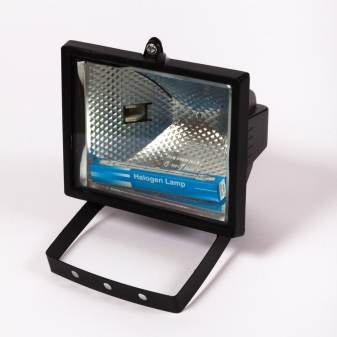
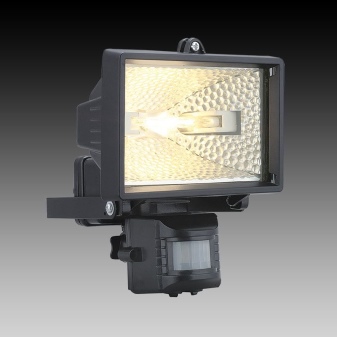
- metal halide - give cold, bright lighting, are immune to voltage surges, have a long service life, but it takes time to ignite;
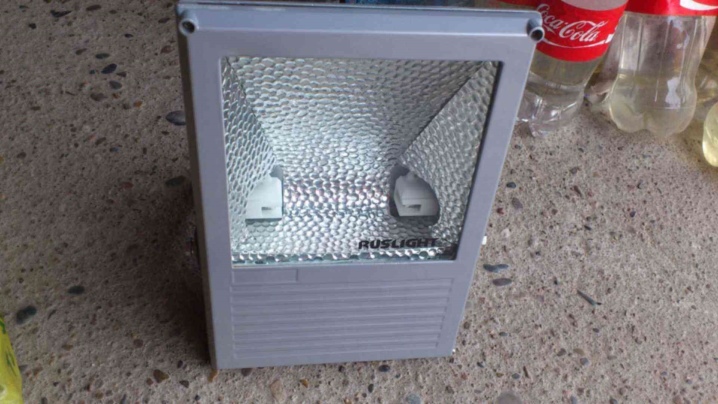
- sodium - give warm, soft yellow lighting, require minimal maintenance, but have little power;
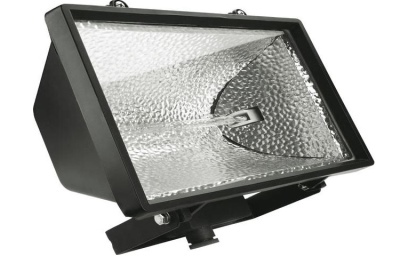
- LED - the most popular, have a luminous flux density, give bright lighting, are suitable for large areas, work properly, do not require additional maintenance, shock-resistant, the only drawback is the high cost, which pays off with a long service life and economical energy consumption.
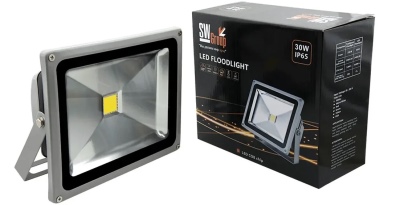
Tripod floodlights are usually either diode or halogen.
By type of destination:
-
signal spotlights - used for optical communication;
-
flood light - for uniform lighting, most often used to illuminate streets and courtyards;
-
accent - to create light accents in niches, arches, illumination of statues and columns;
-
mast - lighting of large areas;
-
long-range - emit cone-shaped light beams.
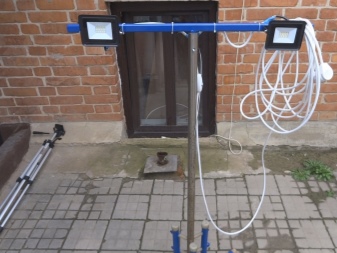
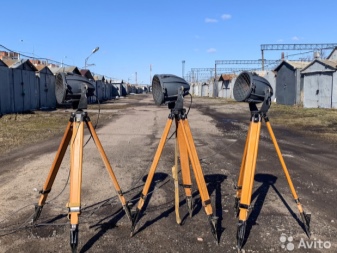
At the place of installation, there are outdoor and indoor. A tripod-mounted spotlight is more versatile; it can be used both indoors and outdoors. In this case, you should rely on the moisture protection characteristics of a particular model.
Tripod-mounted floodlights can be installed on a tripod or directly on the floor. And also they can often be suspended from the ceiling or wall, since the entire structure is disassembled.
The rechargeable floodlight is especially versatile, since it can operate in the field, away from power sources. You can take it on a trip, fishing or to the country.
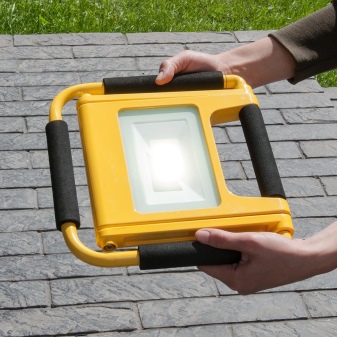

For industrial work, a construction portable floodlight is produced. It provides excellent illumination, allowing you to see even the smallest details of the surrounding area. It is easy to install, and the telescopic stand allows you to set the desired height and tilt. There are models with a rechargeable battery.
The power of the searchlight is counted by the number of lamps. If there are two of them, and the power of each is 50 W, then the characteristics will indicate 2x50, and the power of the floodlight will be 100 W. Usually, two lighting devices are installed in a searchlight on a tripod, less often four.
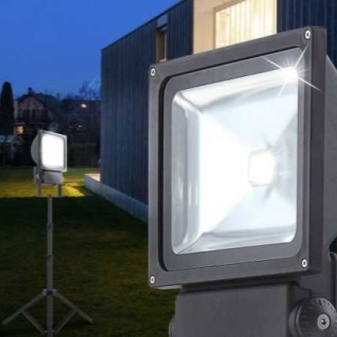
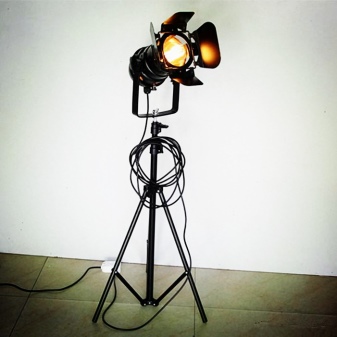
Selection Tips
Depending on the technical characteristics and the type of lighting lamps, the cost of spotlights on a tripod varies greatly. In order not to overpay or not get into a mess, when choosing, you should start from the purpose of the device. If you need to illuminate a veranda or a gazebo, then these are some requirements for a spotlight.
If it is required to illuminate a certain area of construction work, then better and brighter lighting is required here, and therefore completely different requirements are imposed on technical characteristics.
An important role is played by the location of the searchlight - street or building. Unfavorable weather conditions, dust and sand can damage the device.
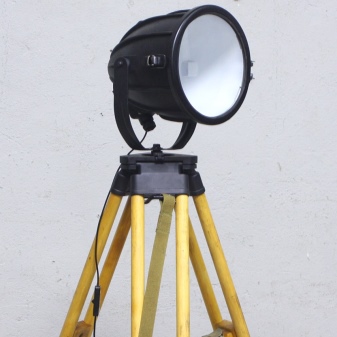
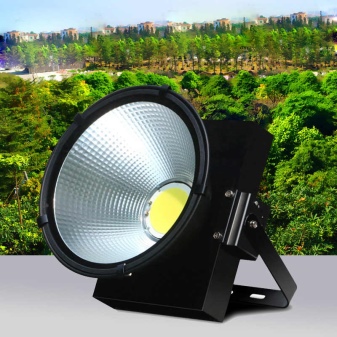
Therefore, when choosing a spotlight, you need to pay attention to a number of characteristics.
- Power... Measured in watts - watts. This parameter shows how much area can be illuminated. The higher it is, the brighter the lighting. For example, 10 W is enough for a gazebo in the garden, at least 30 W is needed for the yard. And to light a small warehouse well, you need 100 watts.

- Colour temperature. Shows the hue with which the spotlight will shine. Measured in kelvin - K. There are three types of color temperature.
-
Warm (up to 3500K) - yellow light, soft, not cutting eyes. Great for lighting recreation areas and home areas, it does not blind the eyes even when close to the light source.
-
Day (3500-5000K) - an alternative to solar lighting. Great for work, as it gives good light, but does not fatigue the eyes. Often used to illuminate work areas.
-
Cold (from 5000K) - bright white light, very blinding to the eyes. Suitable for lighting large areas such as warehouses.
-
The closer the spotlight is to the person and the smaller the area of the room, the warmer you need to choose the light.
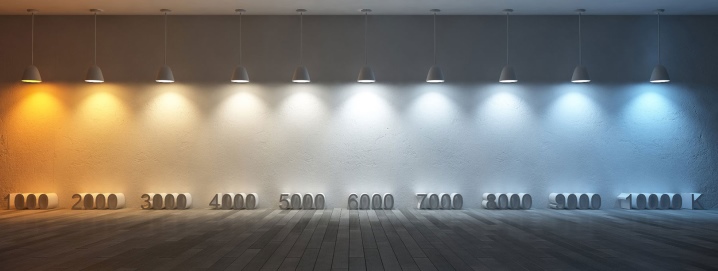
- Luminous efficiency... Shows how brightly and well the area will be illuminated. Lm / W is measured. The better the lighting quality should be, the higher this indicator should be. The optimal indicator is from 60-80 lm / W.
Unfortunately, manufacturers do not always indicate this parameter, but you can calculate it yourself. To do this, you need to find the characteristic of the luminous flux, which is measured in lumens (Lm) - it shows the amount of light emitted by the floodlight - and divided by the power (W).
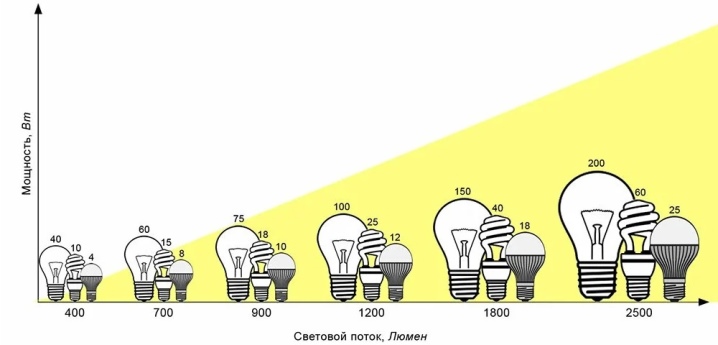
- Color rendering index. Shows how accurately the colors of objects are reproduced when illuminated by a spotlight, since lighting sometimes distorts the real color of objects. This parameter is more important for photo studios and workshops, where the correct color reproduction is important. Measured in Ra. Accordingly, the Ra1 index means the worst color rendering, and Ra100 - the best.
The optimal index for vision is 70-80Ra. But if you only want to light the paths in the garden, then there is no point in overpaying for it.
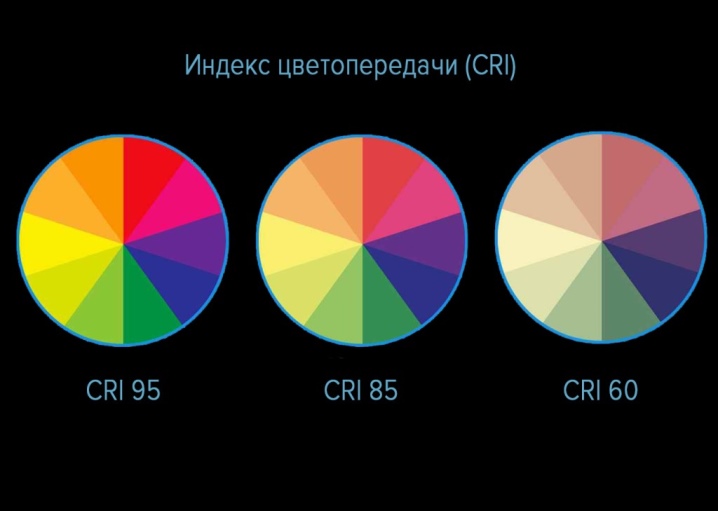
- Ingress protection class (IP). This indicator is important when choosing street floodlights, because the service life of the device directly depends on it. The higher the parameter, the better the protection of the floodlight from moisture and dust. For example, an IP65 class device will withstand rain, IP67 can already be used underwater. But the IP20-22 class is designed only for indoor use.

- Motion Sensor. Allows you to save on electricity, since the device turns on only when necessary. The sensor reacts to movement and the floodlight turns on automatically. Suitable for lighting areas that badly need illumination, but where people rarely walk, for example, dangerous sections of the road or stairs.
Not all floodlights are equipped with sensors, but they significantly affect the final cost.
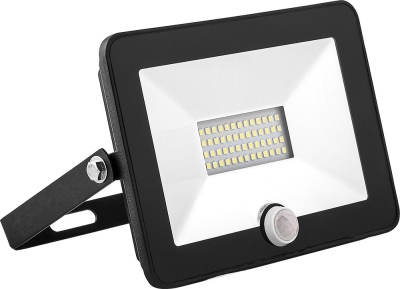
If you choose a spotlight based on the above parameters, you can save a lot. For example, to illuminate the porch of a private house, a device with a power of 10-50 W and a temperature of 4000 K is quite suitable, it can even be equipped with a motion sensor so that it does not burn all night.
A brighter and more powerful fixture is required to illuminate a warehouse. This is definitely a cold color, and the power should be about 100W. Accordingly, focusing on the parameters from manufacturers, you can immediately purchase a suitable floodlight, and not suffer from insufficient lighting afterwards.
It is also important to take into account the climatic features of the region. Not all floodlights tolerate high or low temperatures equally. Therefore, it is important to carefully study the information in the characteristics of the device.
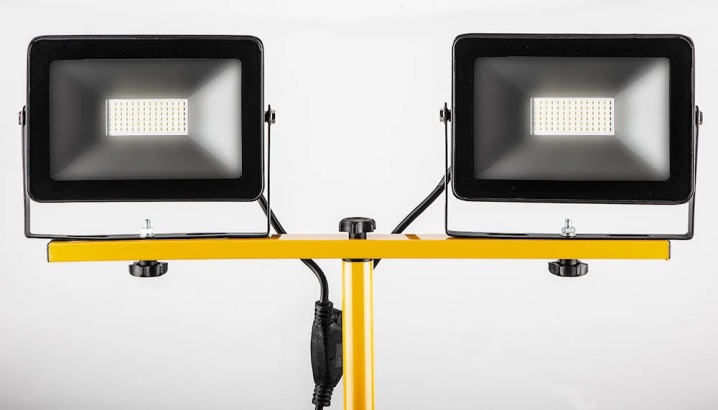













The comment was sent successfully.